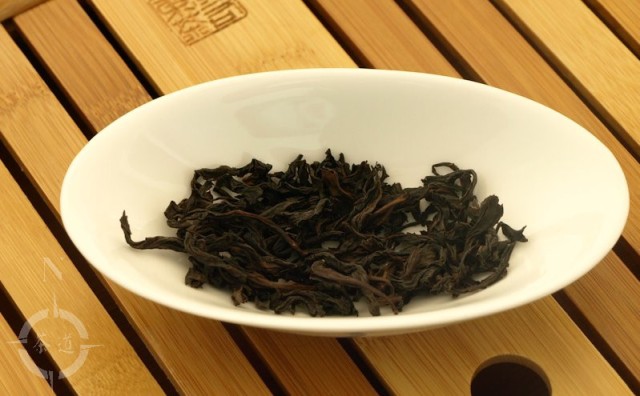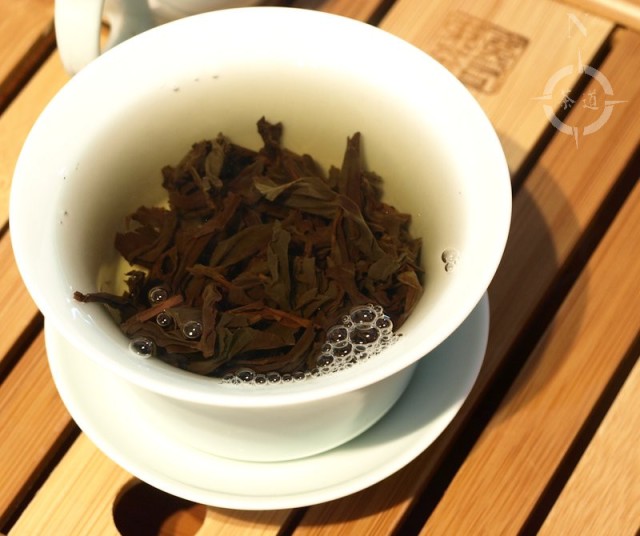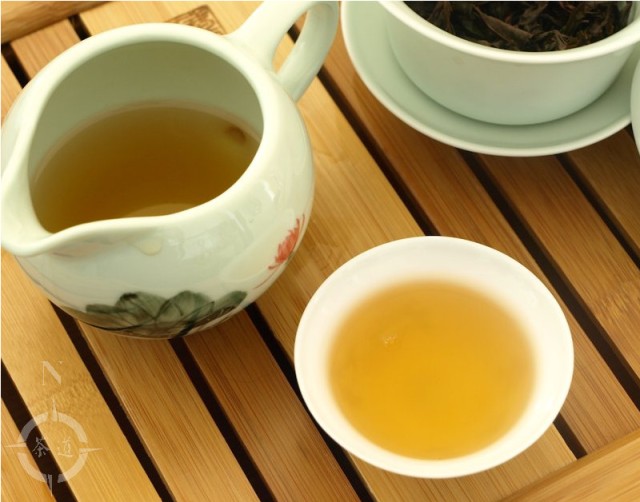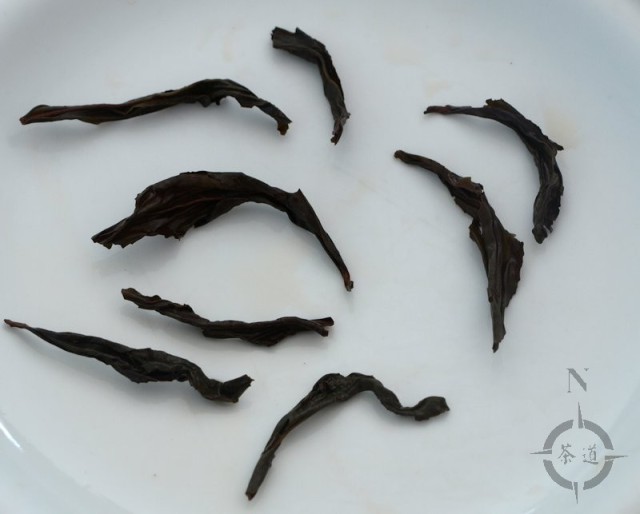
After a virtual trip to Taiwan to sample a lighter, “green” Oolong, I’m now back to what for me is more familiar territory, that is to say the mainland of China and a darker Oolong – Wu Yi Shan Qi Lan.
This tea was one of those I recently purchased from House of Tea. The 50g of tea cost me 159 Swedish Crowns, which at the time of writing equals £13.79 GB, $19.49 US, or €17.10.
As is so often the case, the name of the tea tells you a lot about it, i.e. its origin, which in this case is the Wu Yi Shan mountains of Fujian province, and its cultivar, Qi Lan, sometimes referred to in English as “Rare Orchid” or “Profound Orchid“. Due to the nature of the terrain on which they are grown, the teas from this region are often referred to as “rock” teas.
This particular tea is from Spring 2015, and was grown at an altitude of 600m.
As you can see, it’s a dark, “strip” ( as opposed to a “ball” ) Oolong. After oxidization the tea was roasted in baskets over charcoal for 20 hours.

The dry leaf had only a surprisingly gentle, mild hint of the roasted element, but a very pronounced aroma of dried flowers. Now, I’m no botanist, and that’s a fact, but given its name, I think it’s safe to assume that fragrance will resemble that of the titular blossom.
I weighed out 6g of leaf to match the 150ml of the gaiwan.
The water I used was at 95°C, and as per usual had been run through my trusty Brita filter beforehand. Again, in order to keep the water as close to the optimal temperature as possible, it was immediately placed in a vacuum flask.
After a quick initial rinse, the water from which was used to wash, warm, and “prime” the pitcher / teacup, the tea was given an initial 10 second steeping, with 5 seconds added to subsequent infusions.

As with all darker, more heavily roasted Oolongs, there was a lot going on flavour wise in the cup. The floral notes were most prominent, but there was also a pleasant, low key nuttiness there, as well as a fruitiness, rather reminiscent of blueberry.
The tea liquor had a good body to it, leaving a very pleasant feeling in the back of the throat.
The tea had a very interesting Qi. The full effect hit on the third steeping – a marked warming sensation, as well as a very dreamy, serene feeling, as though the conscious mind had hit a “pause” button. This persisted into the fourth steeping, and amongst other things cleared a log-jam of ideas, and before I poured out the water for the fifth infusion the structure for an upcoming post that had proved to be hard to pin down earlier in the week had crystallized out into a coherent set of arguments.

I persisted until the 7th steeping, mainly because the tea was too good to give up on, but to be honest I think by the 6th infusion I’d already seen the best of it, and the best of this tea was very, very nice indeed.
Most definitely an Oolong worth getting to know. Highly recommended.

One of my sincere favourites! Glad you approve too 😉
Fish
LikeLiked by 1 person
Wuyishan is pretty much the home of oolong tea, I’ll be there next month so I’ll keep an eye out for that tea👍🏼
LikeLiked by 1 person
Lucky you! I think if I made that trip I’d have to take an extra suitcase just for all the tea I would inevitably end up buying…
LikeLike
Oh yeah I have quite the tea shopping list already made up.
LikeLiked by 1 person
Remember to leave room for some mother-bush Da Hong Pao… 😉
LikeLiked by 1 person
Pingback: Midsummer Magic | Diary of a Northern Teaist
Pingback: Just Steepin’ In The Rain… | Diary of a Northern Teaist